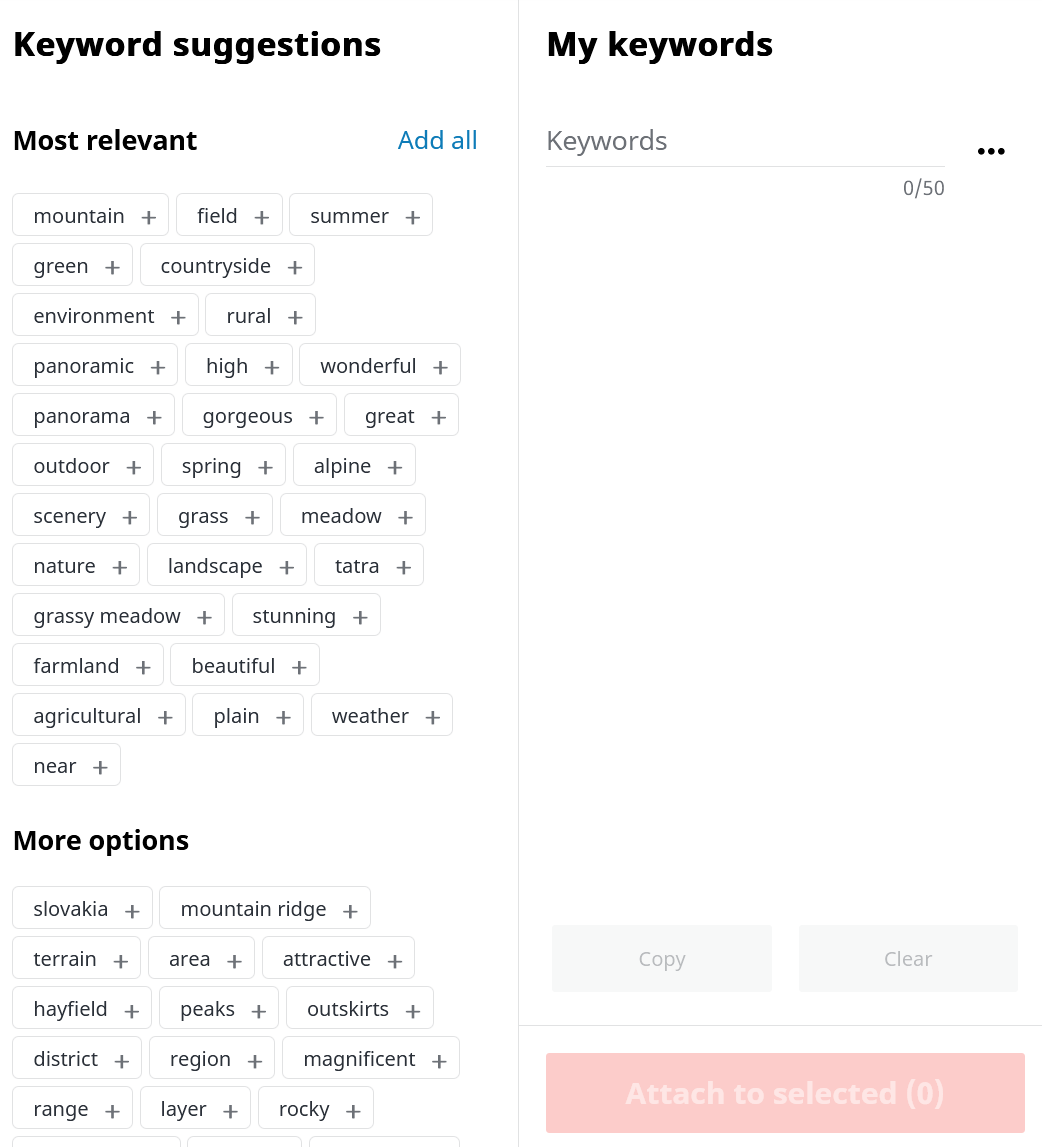If you’ve ever browsed Shutterstock for the perfect image and wanted to use it in your project, you might have wondered about licensing and crediting. Shutterstock offers a vast library of high-quality images, but using them correctly is crucial to avoid legal issues. Licensing determines how you can use an image, while crediting is about giving proper acknowledgment to the creator. Not all images require credit, but understanding the rules helps keep your project professional and compliant. So, let’s dive into what licensing entails and when you need to give credit where it’s due!
Understanding When and Why You Need to Credit Shutterstock Images

Knowing when and why to credit Shutterstock images can seem tricky at first, but it’s pretty straightforward once you get the hang of it. Generally, the need to provide credit depends on the type of license you purchase and how you plan to use the image.
Here’s the scoop:
- Standard License: Typically, images under a standard license do not require attribution. These licenses cover most common uses like social media posts, websites, and brochures. However, if you use the image in a way that exceeds standard limits—like in merchandise or products for resale—you might need a different license.
- Enhanced License: This license often allows for broader use, especially in commercial products, but still doesn’t usually require attribution. It’s ideal for high-volume or high-impact projects.
- Creative Commons or Contributor Images: Some Shutterstock images are uploaded by contributors under Creative Commons licenses, which often do require attribution. Always check the license details before using these images.
Why credit matters: Crediting Shutterstock images is not just about following the rules—it’s about respecting the creator’s work. Proper attribution can also boost your credibility and show your audience that you value original content. Plus, it helps maintain a transparent and ethical creative community.
When do you need to credit?
- If the license explicitly states that attribution is required.
- When using images from contributors who specify credit in their licensing terms.
- If you’re unsure, it’s always safer to provide credit—it’s a good habit and keeps you on the right side of copyright laws.
In summary, understanding the licensing type and the specific requirements for each image ensures you’re using Shutterstock content responsibly. When in doubt, giving credit is a simple way to show respect for the creator and avoid potential legal headaches down the line.
Step-by-Step Instructions on How to Credit Shutterstock Images Correctly

Crediting Shutterstock images properly is essential to respect copyright laws and give credit to the talented photographers and illustrators behind the work. If you’re new to this, don’t worry — I’ll walk you through a simple, step-by-step process to help you get it right every time.
Step 1: Find the Image Credit Details
First things first, locate the image license details on Shutterstock. When you purchase or download an image, Shutterstock provides specific attribution information, usually in the download confirmation or license details. Look for the photographer’s name, the image ID, and any specific attribution instructions.
Step 2: Use the Correct Attribution Format
Shutterstock typically recommends a standard attribution format, which includes:
- Photographer’s Name
- Image Title or Description
- Shutterstock or shutterstock.com
For example: Photo by Jane Doe on Shutterstock
Step 3: Incorporate Attribution into Your Project
Where you place the credit depends on your project. For websites, place it in a footer or near the image. For printed materials, include it in a caption or a dedicated credits section. Make sure it’s visible but unobtrusive.
Step 4: Use Proper Formatting
To keep things clear and professional:
- Italicize or bold the photographer’s name if desired
- Use a smaller font size for credits if on a website
- Ensure the attribution text is accurate and free of typos
Step 5: Double-Check License Terms
Some images might have specific attribution requirements or restrictions, such as not allowing modifications or requiring a particular wording. Always review the license agreement to ensure compliance.
Step 6: Keep Records
Finally, save copies of your license details and attribution information for your records. This helps in case you’re asked to verify your credits later or if licensing terms change.
With these steps, you’ll be confidently giving proper credit to Shutterstock images, respecting creators’ rights, and maintaining professional standards in your projects.
Examples of Proper Shutterstock Image Credits
Seeing a few real-world examples can make everything clearer. Here are some sample credits you can adapt depending on your format and context:
Example 1: Website Footer or Caption
Photo by Jane Doe on Shutterstock
Example 2: Formal Publication or Article
Image: Sunset over mountains by John Smith, Shutterstock. Used with permission.
Example 3: Social Media Post
Photo by Lisa Chen on Shutterstock
Example 4: Presentation Slide
| Image Description | Photographer | Source |
|---|---|---|
| City skyline at night | Michael Johnson | Shutterstock.com |
| Wildflowers in bloom | Sara Lee | Shutterstock.com |
Tips for Making Your Credits Look Professional
- Keep the font size small but readable
- Place credits near the image or at the bottom of the page
- Use consistent formatting throughout your project
- Double-check spelling and attribution details
Remember, proper attribution isn’t just a legal requirement — it’s a way to acknowledge the creativity and effort of the original artists. By following these examples, you’ll ensure your projects are respectful, professional, and compliant with Shutterstock’s licensing policies.
Common Mistakes to Avoid When Crediting Shutterstock Images
When you’re working on a project that uses Shutterstock images, proper crediting isn’t just a courtesy — it’s a legal requirement. But even seasoned designers and content creators can slip up. Let’s go over some of the most common mistakes to watch out for so you can keep your work compliant and respectful to photographers and Shutterstock’s licensing terms.
Failing to Credit at All
This is probably the biggest no-no. Some people assume that because they purchased a license, they don’t need to credit the image. That’s not the case. Shutterstock’s standard license typically doesn’t require attribution, but if you’re using images under a Creative Commons license or if your specific agreement states otherwise, failing to credit can be a legal issue. Always double-check the license details before publishing.
Incorrect or Incomplete Attribution
If you are required to credit the image, make sure it’s done correctly. A common mistake is leaving out key information like the photographer’s name or the Shutterstock contributor’s username. An incomplete attribution might look like:
- “Image by Shutterstock”
Instead of:
- “Photo by Jane Doe on Shutterstock”
or even better, following the specific attribution format provided by Shutterstock or the license agreement.
Misplacing or Not Displaying the Credit
Where you place your credit matters. It should be clearly visible and near the image, especially in print or digital publications where attribution might be overlooked. Common mistakes include hiding credits in fine print, footer notes, or obscure corners. To avoid this, place the credit directly beneath or adjacent to the image, or in the caption area if there is one.
Using the Wrong License for Your Needs
Shutterstock offers different types of licenses — standard and enhanced. Using a standard license for purposes that require an enhanced license, or vice versa, can lead to legal trouble. Make sure you’re aware of which license covers your intended use, especially if you plan to use the image in merchandise, large-scale advertising, or products for resale.
Not Keeping Records of Your Licenses
Always save your purchase receipts and license details. If you’re ever questioned about your right to use an image, having a clear record can save you time and legal headaches. It’s a good practice to organize your images and licenses in a dedicated folder or digital archive.
Additional Tips for Using Shutterstock Images Legally and Ethically
Using images ethically isn’t just about avoiding legal trouble — it’s about respecting the hard work of photographers and creators. Here are some tips to help you navigate Shutterstock images responsibly and confidently.
Understand the License Types
Before you start, familiarize yourself with Shutterstock’s licensing options. The standard license usually covers most uses like websites, social media, and print materials up to a certain size or print run. The enhanced license is for more extensive use cases, such as product packaging or large-scale advertising. Choosing the right license ensures you’re compliant and avoid future issues.
Always Read the License Agreement
Each image may have specific restrictions or requirements. For example, some images may prohibit use in sensitive contexts or require model releases for certain commercial uses. Take the time to review the license terms linked with each image before incorporating it into your project.
Respect Model and Property Releases
If your Shutterstock image features recognizable people, places, or private property, ensure that proper releases are in place. Using images without necessary releases can lead to legal complications, especially if the image is used commercially or in a way that could infringe on privacy rights.
Give Proper Attribution When Required
If your license or the image’s license terms specify attribution, do it diligently. Use the correct format, placement, and wording. When in doubt, include the photographer’s name and Shutterstock as the source, like:
“Image by Jane Doe on Shutterstock”
Be Mindful of Ethical Considerations
Beyond legal obligations, think about ethics. Avoid using images that might be offensive, stereotypical, or misrepresentative. Respect cultural sensitivities and consider the context in which you’re using images to ensure your content remains respectful and responsible.
Keep Your Licenses Up to Date
If your project evolves or expands, review your licenses to make sure they still cover your new usage. Renew or upgrade licenses as needed to stay within legal boundaries.
By staying vigilant and respectful, you not only avoid legal pitfalls but also support the hardworking creators behind the images. Proper crediting and ethical use help maintain a healthy, creative community and ensure your projects remain professional and trustworthy.
Conclusion and Best Practices for Crediting Shutterstock Images
Effectively crediting Shutterstock images not only ensures compliance with licensing agreements but also demonstrates respect for creators’ rights. Proper attribution helps maintain transparency and supports the ongoing availability of high-quality visuals for your projects. To ensure you’re following best practices, consider the following guidelines:
- Always read the license agreement: Understand the specific attribution requirements associated with each image you use.
- Provide clear attribution: Mention the creator’s name, Shutterstock as the source, and include a link if possible. For example: Image by John Doe via Shutterstock.
- Use consistent formatting: Incorporate attribution in captions, credits sections, or in proximity to the image, depending on your platform’s standards.
- Keep records: Maintain documentation of licensing details and attributions for future reference or potential audits.
- Stay updated on licensing policies: Shutterstock’s licensing terms can change; regularly review their guidelines to ensure ongoing compliance.
Incorporating these best practices helps protect your projects legally and ethically while fostering a respectful creative community. Remember, proper attribution is a small step that significantly impacts the integrity and professionalism of your work. By staying informed and diligent, you ensure your use of Shutterstock images remains compliant and respectful of the original creators’ efforts.


